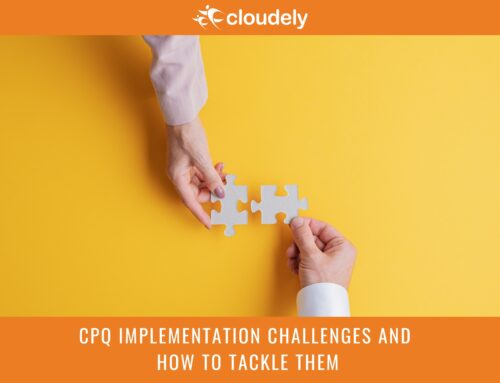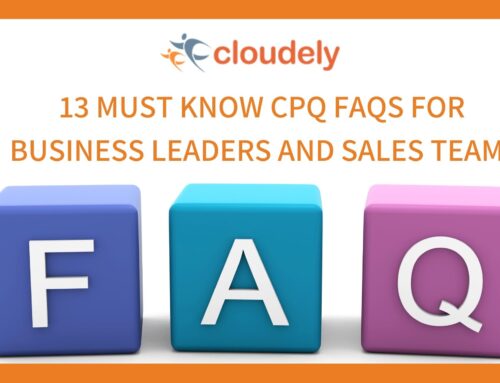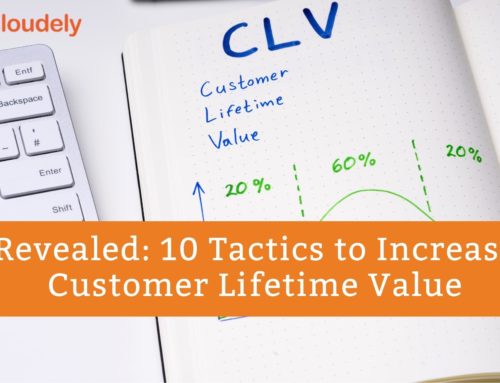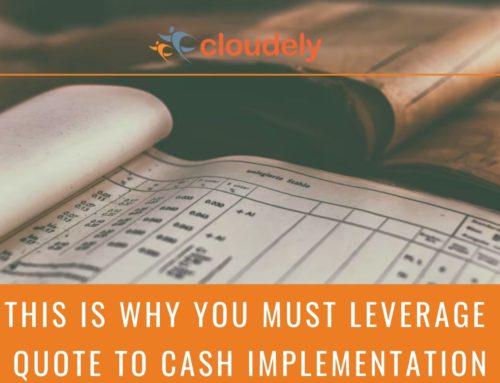Legacy quoting solutions are cumbersome and not always best suited for complex products and pricing that are commonplace. CPQ is a great sales tool that the majority of industry giants use to improve their sales team’s efficiencies by generating error-free quotes, guided selling, upselling, and cross-selling. The main benefit of CPQ is to make the sales cycle more efficient, productive, and successful by enabling sellers to create accurate quotes easily.
On the other hand, CPQ Implementation is a complex process. A good implementation partner that puts in place CPQ implementation best practices with talented and certified resources can make the implementation journey smoother. This article highlights the CPQ KPIs and the CPQ implementation best practices to achieve them.
What is CPQ?
CPQ stands for Configure, Price, Quote (CPQ). CPQ implementation enables companies to create accurate quotes for complex configurable products and bundles.
CPQ tools are widely used by businesses globally across industries and companies of all sizes.
For instance, Apple Inc, Atlassian, Intuit, Google Cloud, ExxonMobil, and Alphabet Inc. use Salesforce CPQ.
CPQ Podcast: Listen to this podcast by Mr.Suren Reddy, CEO & Co-Founder, Cloudely Inc. explains the power of CPQ in business transformation.
How can businesses determine the necessity for CPQ?
To determine if it’s the time for CPQ implementation, identify if your sales team or process faces any of the following challenges:
- Is the sales team confronting slow turnaround times when generating quotes for customers?
- Does the business include many complex products with even more complicated pricing models?
- Do the sales reps have the ability to create quotes without errors?
- Are you experiencing revenue loss due to over-discounting?
- Do you have the capability to create quotes on multiple devices and not just on the device the sales rep has used for quote creation?
If you answered yes to any or all of those questions, a CPQ tool can make a difference.
Suggested Reading: Benefits of CPQ
KPIs for successful CPQ implementation
A well-performed CPQ implementation should provide the following outcomes:
- Reduction in time spent selling
- Decrease in quotation turnaround time
- Accuracy of generated quote
- Increase in win rates and renewal rates
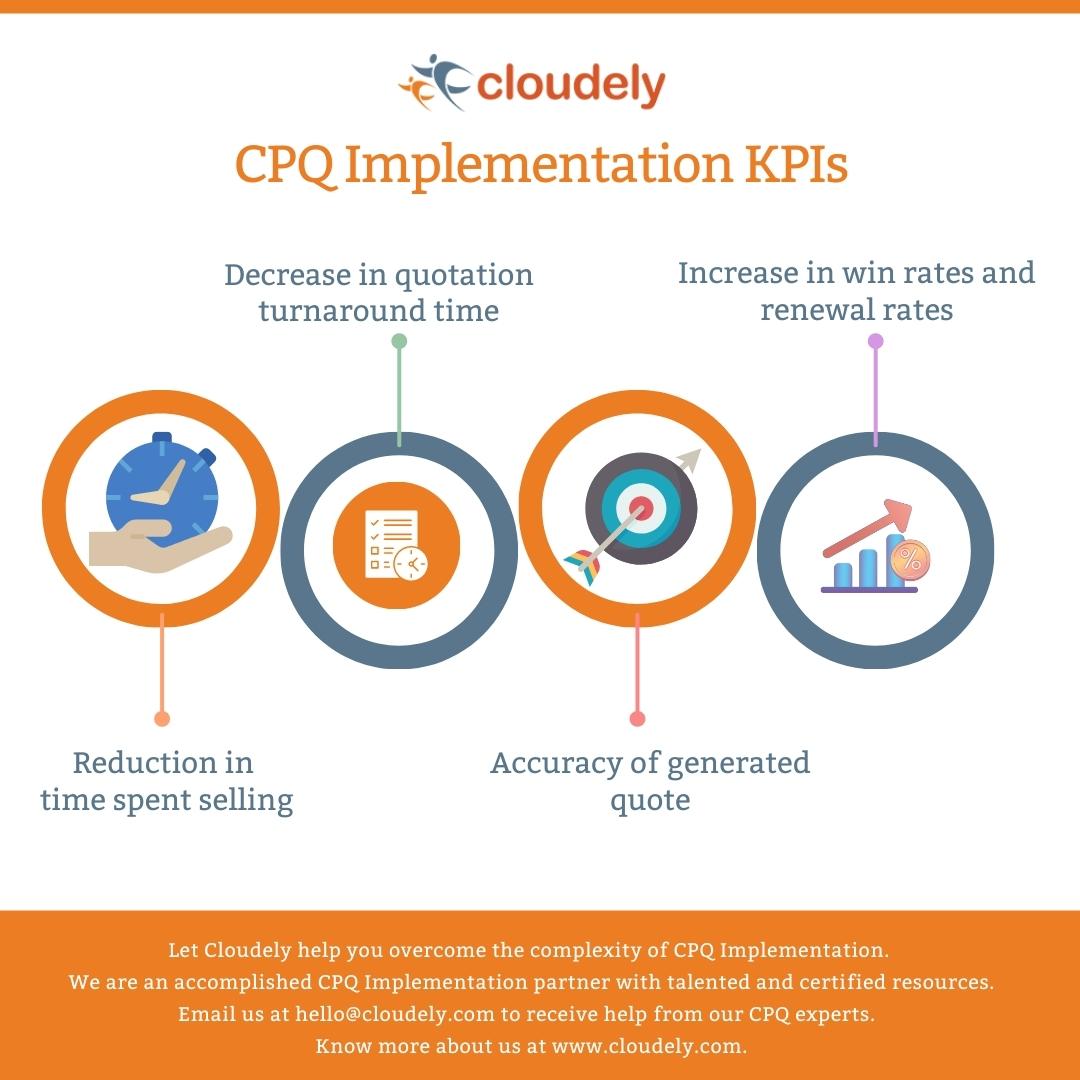
CPQ best practices
Here are the pointers and best practices to consider before getting started with CPQ implementation:
#1: Consider the Project Goals
The first and most critical step in the CPQ implementation process is identifying project goals and objectives.
CPQ implementation is an opportunity to evaluate the sales team’s difficulties and provide effective solutions.
One cannot make the mistake of concentrating solely on technical issues – you also need to focus on the business process objectives and needs.
- Define what your sales process is missing and what you aim to improve.
- Establish measurable targets for your CPQ implementation by understanding your sales process objectives.
- Set your goals and specify them by quantitative or qualitative measure. It will come in handy when calculating your CPQ’s actual ROI.
#2: Choose Implementation Methodology
A hybrid model of Waterfall and Agile methodologies would be most appropriate due to the complexity and interdependency between the different product modules.
Following the waterfall methodology, at least in the design phase, and deciding how to work further for the development phase is the best way forward.
Different CPQ modules rely on each other and cannot follow the iterative design approach simply because they should work together in a unified process.
Designing it in iterations would lead to reworking the previous modules; hence the waterfall approach works best throughout the design phase.
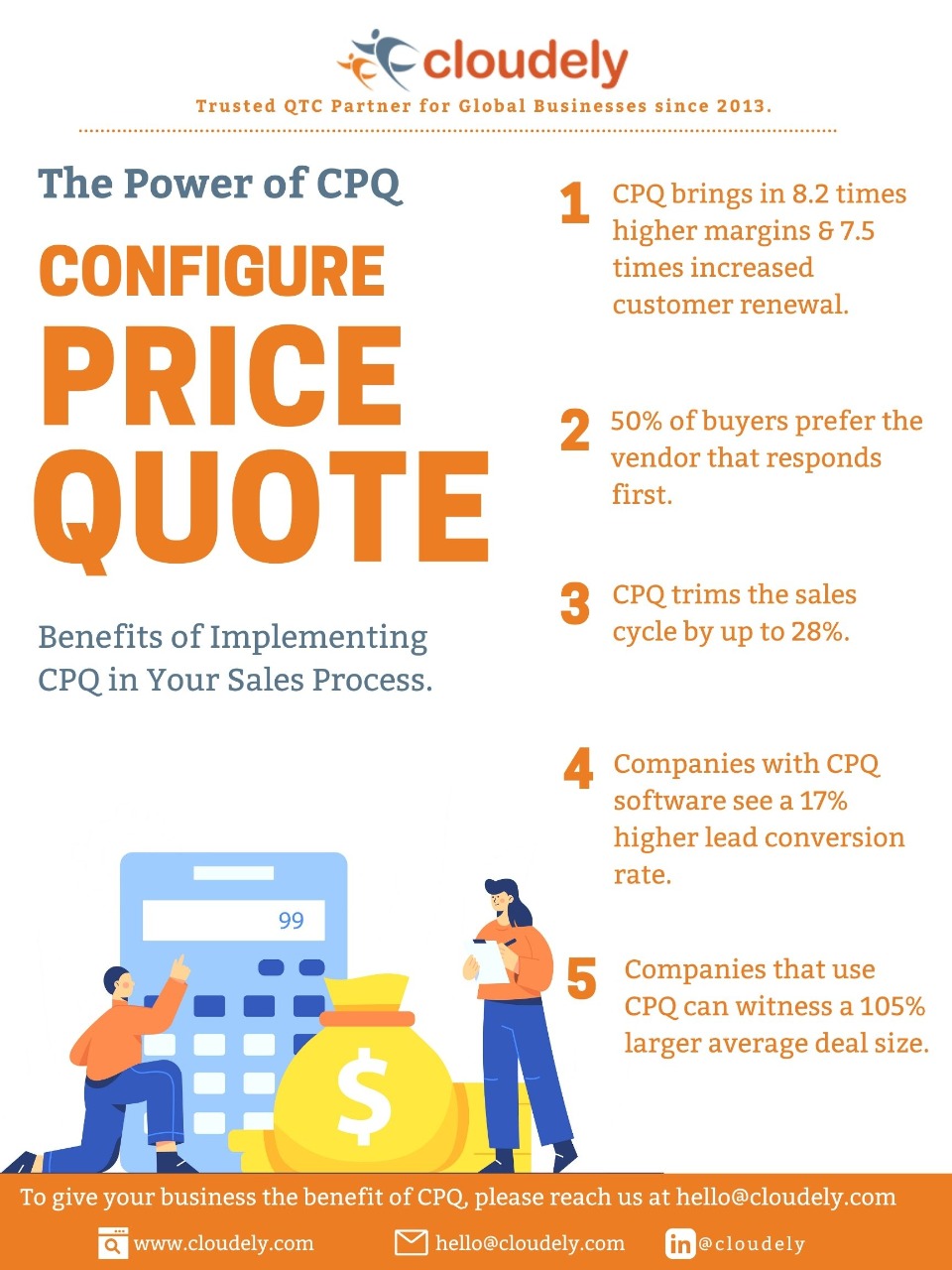
#3: Make the right feature trade-off
For better ROI, choose only the product features that would bring maximum value instead of implementing all available options.
One of the best CPQ implementation practices is to be bound by the business needs and processes discussed during the requirement workshops with stakeholders.
The more clarity about the customer goals and processes, the easier to prioritize CPQ features.
Another tip here is:
Adherence to the Out of the Box (OOB) features and avoiding customizations when possible is the best foot forward.
The ideal CPQ Implementation strategy is to accept the “out-of-the-box” features first and ensure everything runs smoothly before adding additional capabilities and customizations.
#4: Planning your Data
Data planning is a critical stage since CPQ requires data from different sources. Determining the necessary data and the source is one of the CPQ implementation best practices.
Data related to product tax rates, discount rates and tiers, and pricing bundles may rely on integration with other systems.
One needs to ensure that Salesforce CPQ works seamlessly with the other ERPs. Managing the backend database properly and providing adequate storage, resources, and backups would be helpful.
A careful, expert-assisted step-by-step approach to your CPQ Implementation helps attain KPIs and return on investment.
Make Cloudely your CPQ Implementation Partner
Cloudely is a leading provider of Salesforce and Conga CPQ services to global organizations since 2013. We help our customers to overcome their sales difficulties and create opportunities for sales growth.
Listen to our podcast “CPQ Configuration Best Practices”, where our CPQ Implementations SME Mr. Sumantra will walk you through the best practices of CPQ implementation.
Don’t hesitate to ask any queries related to your CPQ implementation. Connect with us at hello@cloudely.com for further information on how CPQ benefits your business.


